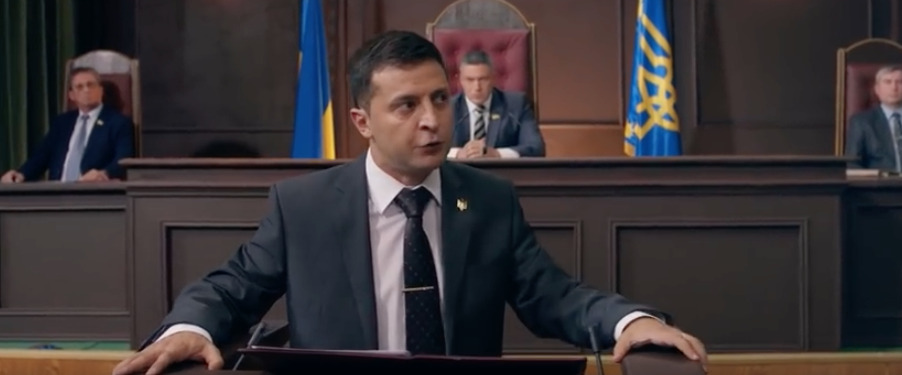
By Ben Aris, Intellinews, 9/23/23
The Russian government has approved its first full wartime budget that will significantly increase military spending in 2024 as well as boost social spending to shelter the population from the effects of war and sanctions.
The draft budget for 2024 will increase military spending 1.7-fold and for the first time in the history of modern Russia will exceed social spending. The latter, however, will also increase, as will the costs of security forces and intelligence services, The Bell reported onSeptember 22.
To finance these huge expenses, the government will have to find somewhere an additional RUB7 trillion rubles in revenue compared to 2023. Firstly, this makes it inevitable that inflation will continue to accelerate and the Central Bank will maintain a high rate. And secondly, it almost inevitably means new taxes – and the authorities are already moving in this direction. So far the Ministry of Finance (MinFin) has done everything it can to avoid raising taxes other than hitting big business with a windfall tax on large enterprises that should bring in an extra RUB300bn ($4bn) of revenues.
The draft federal budget for 2024–2026 must be submitted to the Duma before October 1. The government press service disclosed only the general parameters of the budget, without a breakdown of expenses, but Bloomberg was leaked figures for the most important items.
Military expenditures (item “National Defence”) in 2024 will amount to RUB10.8 trillion rubles — 1.7 times more than Russia will actually spend on defence in 2023 (RUB6.4 trillion, according to Bloomberg), and 2.3 times more than in the first war year of 2022 (RUB4.7 trillion).
RUB10.8 trillion rubles is approximately 6% of GDP, twice as much as the budget spent on defence items in the pre-war years. This ratio is comparable to US military spending in the 1980s, at the last peak of the Cold War (after 1988, the US never spent more than 6% of GDP on defence). Russia is still far from the USSR, which spent 12–14% of GDP on defence.
Almost nominal, but still, growth is planned for the “National Security” section, which takes into account spending on law enforcement agencies and intelligence services – from RUB3.2 to RUB3.5 trillion rubles.
Of the three remaining major sections of the budget, expenses for the National Economy – where government investments and subsidies to business are taken into account — will be reduced from RUB4.1 to RUB3.9 trillion rubles.
The remaining healthcare and education will remain unchanged: RUB1.6 and RUB1.5 trillion rubles, respectively.
The government’s willingness to dramatically increase military spending, without sacrificing anything else, is based on over-optimistic forecasts of budget revenues and expenditures.
The government expects that in 2024 the budget will receive RUB35 trillion in revenue, compared to RUB26.1 trillion planned for this year (an increase of RUB8.9 trillion rubles, or 34% compared to 2023). Of this, RUB11.5 trillion rubles should come from oil and gas revenues (RUB8 trillion is planned for 2023).
“The government’s expectation for revenues looks optimistic and unrealistic,” says Alexandra Prokopenko, a Russian finance expert. “The key take aways from Russia’s wartime budget: Putin prepares for the long war; guns above the butter (military spending exceeds social for the first time ever; and all the cows that can still give milk in Russia’s economy will be milked to death.”
Budget expenditures are planned at RUB36.6 trillion (an increase of RUB7.6 trillion, or 26.2% by 2023). This means that the budget deficit in 2024, according to the government’s plan, should be significantly reduced – from 2% of GDP planned for 2023 (RUB2.9 trillion rubles) to 0.8% of GDP (RUB1.6 trillion rubles).
These figures should be supported by the optimistic forecasts of the Ministry of Economy for 2024 included in the budget – GDP growth by 2.3% (and not less than 2% in 2025-2026), the price of Urals oil is $85 per barrel. The average dollar exchange rate in 2024, according to the forecast, will be RBU90.1 to the dollar. The current forecast of the Central Bank is somewhat more modest – for 2024 it promises 0.5–1.5% GDP growth and Urals at $60.
The bottom line is that the government, in order to finance the cosmic increase in military spending, while not forgetting about social ones, will have to find RUB9 trillion rubles of additional income somewhere in 2024 (an increase of 34%).
On the one hand, the nominal growth of budget revenues will be facilitated by the weakening of the ruble that has already occurred and accelerating inflation (by the end of 2023 it should be 7.5%).
On the other hand, a new budget rule, announced on September 22 by Finance Minister Anton Siluanov, should increase revenues. In fact, we are talking about a return to the old formula, forgotten after the start of the war: all oil and gas revenues received above the cut-off price set by the government go to the National Welfare Fund, and all income below this price goes to the budget. Only the cut-off price will now be $60 per barrel – $15 higher than it would have been under the old formula.
The chief economist for Russia at Bloomberg Economics, Alexander Isakov, estimated the effect of the new version of the fiscal rule at RUB1.5 trillion in additional budget revenues.
But all this will not bring RUB9 trillion, says The Bell. The government directly hinted at how they were supposed to receive them this same week, announcing the introduction of new duties for exporters. They will be in effect from October 1 until the end of 2024. Depending on the exchange rate, the duty will be 10% for fertilizer producers and 4–7% for all other industries. At an exchange rate of RUB80 per dollar and below, the duty will be reset to zero (but the forecast of the Ministry of Economy – the average annual rate of RUB90.1 – does not assume this).
In fact, we are talking about an indirect tax for export-oriented businesses. A businessman working in the fertilizer market shared his calculations with The Bell: for his industry, the introduction of new duties is equivalent to an increase in the effective income tax rate in the fourth quarter of 2023 to 40% (the nominal rate is 20%), and taking into account the previously introduced one-time tax on excess profits – 55%.
This proposal was not particularly discussed with business, two of The Bell’s interlocutors say. Moreover, he claims that the chief commissioner for combating inflation, the Central Bank, did not participate in the discussion. This seems strange to The Bell’s interlocutor – after all, after the proposal appeared, experts immediately saw pro-inflationary risks in it.
The government does not have many other options for replenishing the budget, other than increasing or introducing new taxes. The growth of domestic demand, on which the economy grew (and with it non-oil and gas budget revenues) in 2023, should soon slow down due to an increase in the Central Bank rate.
At the same time, the budget, which plans to increase spending by 26%, means that high rates are here to stay, otherwise inflation will get out of control. And high rates, in turn, make it more expensive for the Ministry of Finance to service existing government debt (the yield of 40% of currently outstanding OFZs is tied to the Central Bank rate) and worsen the conditions for new borrowings.
This year budget on course for 2% GDP deficit
Russian Prime Minister Mikhail Mishustin expects execution of the federal budget by the end of this year with a planned deficit of 2% of GDP.
“Sustainable focus on positive changes permits expecting execution of the federal budget this year with a deficit at the level of the initial projection of 2% of GDP,” he said at a meeting devoted to drafting federal budget for a three-year period. According to Economic Development Ministry’s data, “amid this background it is safe to speak about maintaining and even improving of those trends next year,” PM added.
Speaking about expenditures, he said that after the advancing period at the beginning of the year they returned to their traditional level and amounted to around RUB2.24 trillion in August.
According to preliminary figures provided by the Finance Ministry, Russia’s federal budget deficit totalled RUB2.81 trillion ($28bn) in January-July. (chart)
Russia had a surplus federal budget in August in the amount of around RUB230bn ($2.3bn), Prime Minister Mikhail Mishustin said at a meeting devoted to drafting federal budget for a three-year period.
The Russian economy is adjusting to current challenges, he noted. “In August, federal budget ran a surplus, which amounted to around RUB230bn. Consolidated balance of the regions added another RUB140bn,” he said, noting that the Russian economy “is adjusting to current challenges.” The budget ran a surplus largely due to a surge in non-oil and gas revenues, PM explained, adding that they exceeded RUB1.8 trillion ($18.5bn) in August, up 56% compared with last year.
Oil and gas revenues of the Russian federal budget totalled RUB4.836 trillion ($44.76bn) in January – August 2023, which is 38.2% lower than a year ago, the Finance Ministry said on its website. Accumulation of extra oil and gas revenues during periods of the comfortable price situation and use of National Wealth Fund resources to cover shortfalls in oil and gas revenues in line with fiscal rule parameters provide for the budgetary system resilience to fluctuations in receiving oil and gas revenues, the ministry added.
Non-oil and gas revenues of the Russian budget amounted to RUB12.155 trillion ($124bn) in January – August 2023, the Finance Ministry said on its website.
“Non-oil and gas revenues totalled RUB12,155bn and surged by 24.2% year on year. The dynamics of receiving the largest non-oil and gas revenues of the federal budget (turnover taxes and income tax) remains consistently positive, including against the level of 2021 (as the least exposed to statistical effects of the base),” the ministry informed.
Food exports are emerging as a significant revenue source for Russia’s budget, following energy exports, according to Ruslan Davydov, Director of the Federal Customs Service. During an interview at the Eastern Economic Forum, Davydov highlighted the substantial increase in Russia’s grain exports compared to 2022.
Davydov stated, “Our agricultural products exports are performing well. We have almost exceeded last year’s exporting figures, with grain being the primary export, along with oil seeds, oil, vegetable oil, and sunflower seeds.” He noted that China, the Middle East, Egypt, and Kazakhstan are the primary importers of Russian food products. While food exports have increased by approximately 70% in volume, their value has been influenced by price dynamics.
In addition to food exports, Davydov discussed the remarkable growth in Russia’s car cargo transportation, which has more than doubled year-on-year in the past months of 2023. He highlighted the growth in both sea and railway cargo traffic, with car cargo traffic experiencing a 2.5-fold increase compared to 2022.
Furthermore, Davydov mentioned that China accounts for a significant share of Russia’s car imports, representing 92% in the period from January to August.








